The Concept of Stress
When discussing the concept of stress, we inevitably have to involve strain. Stress refers to the force generated within an object to resist deformation under external forces. Strain, on the other hand, refers to the relative changes in the shape and size of an object under external forces. These two concepts, as important parameters for describing and measuring the behavior and performance of materials under stress, are widely used in the field of materials science.

Stress of the Lens
In the field of materials science, stress is an important concept. The production of resin lenses is an important application direction in this field, involving relevant knowledge of lens materials. Nowadays, the mainstream lenses on the market are mainly made of resin materials. During the production process, the generation of stress in the lenses is unavoidable. Of particular concern is that the stress effect of the lenses cannot be visually identified by the naked eye, and can only be effectively monitored with the help of specialized optical testing equipment such as a stress meter. During the production process, lenses may generally exhibit two types of internal stress phenomena: orientation stress and shrinkage stress. These two types of stress can have a certain impact on the quality and performance of the lenses, and therefore need to be given sufficient attention.
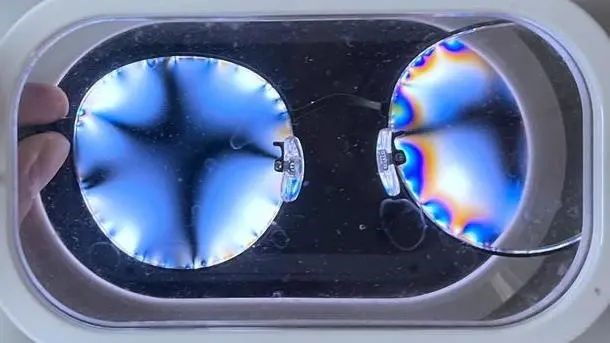
① Orientation Stress
During the molding process of resin materials, the molecular chains are subjected to high pressure and high shear forces, causing them to undergo drastic changes. Due to the fact that the material's molecular chains are frozen in a disordered and relaxed state before fully returning to their natural state, residual orientation stress is generated. This phenomenon is particularly evident in PC materials.
Simple Explanation:
The lens is made of resin material. During the molding process, the transition from liquid to solid lens shows incomplete uniformity, resulting in internal stress. This internal stress manifests as pressure from areas of higher density onto areas of lower density.

②Shrinkage Stress
During the production process of resin materials, the molecular chains, as they transition from melting to cooling, may experience non-uniform distribution of cooling temperatures due to variations in product wall thickness or cooling water channels. Consequently, this temperature difference can lead to varying degrees of shrinkage in different areas. The difference in shrinkage rates between different areas may result in residual stress due to the effects of tensile and shear forces.
Simple Explanation:
During the cooling process of lens production, factors such as differences in lens thickness and their relationship with the internal cooling equipment, for example, faster cooling in some areas and slower cooling in others, can all lead to the generation of internal stress.
The Elimination of Lens Stress
1. Optimization of Production Techniques
In order to reduce the generation of internal stress during lens manufacturing, lens manufacturers continuously optimize and improve production techniques. During the lens production process, the lens undergoes three high-temperature curing steps. The first curing process transforms the lens from a liquid state to a solid state and eliminates inherent stress within the solid. The subsequent two curings aim to eliminate internal stress multiple times, thereby achieving the most uniform internal structure of the lens.
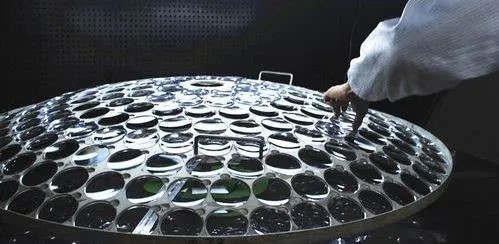
2. Relaxation of Lens Stress
According to the explanation of Hooke's law in physics, under constant strain conditions, stress gradually decreases over time, a phenomenon known as a stress relaxation curve. This means that the orientation and shrinkage stress effects generated during the lens production process gradually weaken as the storage time of the lens after molding increases. The relaxation time of lens stress is closely related to the strain and external stress. Under normal circumstances, the stress in the lens will decrease to a minimum after approximately three months following the completion of lens production. Therefore, in general, the internal stress in the lens is essentially eliminated after it leaves the factory.
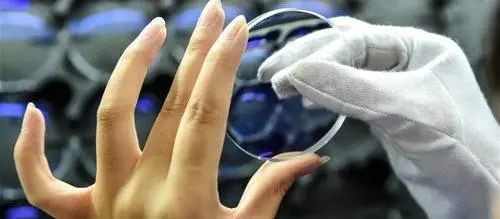
The Generation of Stress in Eyeglasses
Given the understanding of lens stress, we know that the impact of stress on individual lens products is relatively small, and can even be considered insignificant. Therefore, in the national standard for lenses in China, stress parameters are not included in the criteria for qualification. So, what is the root cause of eyeglass stress? This is mainly closely related to the process technology of customized eyeglass preparation.
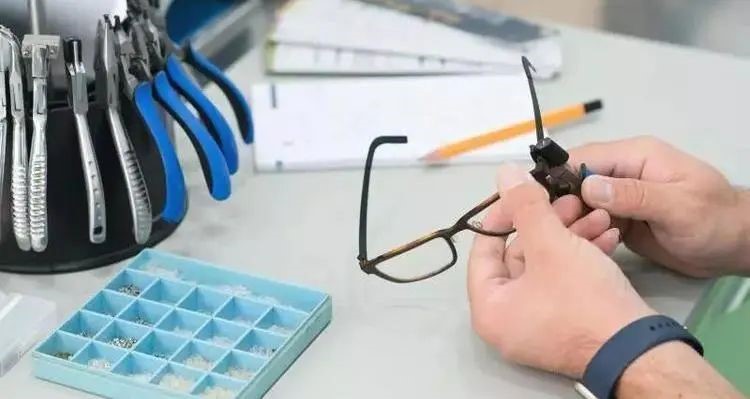
In eyeglass retail stores, during the process of installing the ground lens into the frame, the optician grinds the lens slightly larger than the actual required size to prevent the lens from being too loose and easily detached from the frame. This ensures a secure fit when the lens is fastened to the frame with screws, preventing it from slipping. However, this operation may increase lens stress, leading to discomfort when worn. Oversized lens dimensions or over-tightening of the frame screws may cause uneven refraction on the lens surface, resulting in wave-like ripples and affecting the imaging quality.
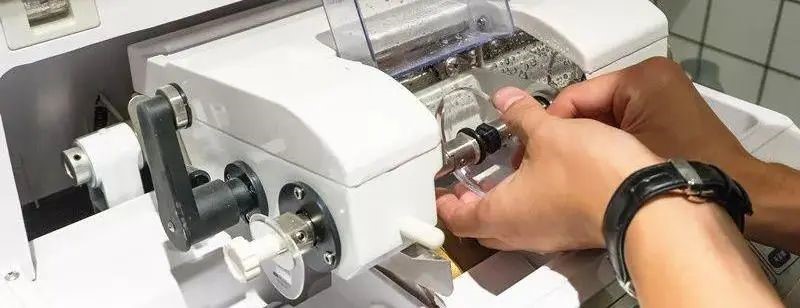
The Phenomenon of Eyeglass Stress Generation
1. Birefringence
Due to the slightly larger grinding size of the lens, tightening during the assembly process causes the peripheral area of the lens to be compressed, resulting in increased density. This change in density alters the original refractive index of the lens, thereby inducing the occurrence of "birefringence" in the lens.
2. Skewed
Scattering During the eyeglass assembly process, if the size is too tight, it will cause the lens to be compressed, resulting in surface "wrinkles" and triggering skewed scattering of the lens.
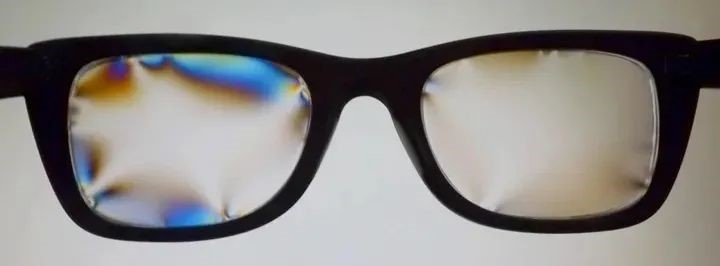
When facing such issues, we can remove the lens from the frame to change the compressed state of the lens. This change is a temporary stress adjustment, and after the external force is removed, the state of the lens can be relieved or even completely restored. However, it is worth noting that if there are long-term internal stress changes caused by external pressure, even if the lens is disassembled and reassembled, it cannot guarantee the restoration of the lens to its original state. In this case, the only option is to choose to customize a new lens.
Lens stress is more common in full-frame glasses, and in semi-rimless glasses, it can also occur if the rim wire is too tight. This type of phenomenon usually occurs in the peripheral area of the lens, and slight stress has a minor impact on visual quality and is not easily noticeable. However, if the stress is excessive, it will affect the central optical zone, leading to blurred vision and visual fatigue, especially when looking at the periphery or during scanning movements.
Because eyeglass stress is mostly caused by the compression of the frame, frameless glasses exhibit better stress relief performance.
Eyeglass Stress Self-testing Method
After being subjected to external forces, lenses of different materials will produce different stress patterns due to differences in density, hardness, and internal structure. However, stress phenomena may occur regardless of the material. The following is a brief introduction to a stress testing method. The tools needed are a computer monitor and polarized lenses.
Operating method:
1. Start the computer and open a blank Word document. (Stress testing requires the use of polarized light, and a computer monitor is a common source of stress testing light.)
2. Place the glasses in front of the computer screen and carefully observe to see if any abnormal phenomena are present.
3. Use polarized lenses (options include polarized sunglasses, polarized lens clips, and 3D movie glasses) to observe the stress patterns on the lenses of the glasses and the computer monitor.
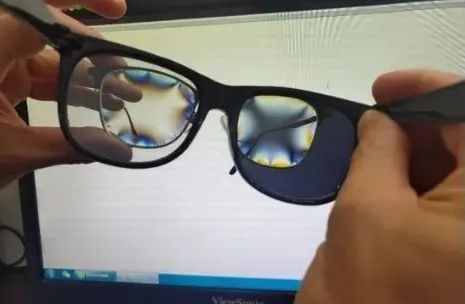
Polarized lenses can reveal the striped distortion in the peripheral area of the lens, which is the manifestation of stress patterns. The distribution of stress on the glasses usually appears as stress points and stress fields, and the degree of stress patterns is closely related to the stress effect of the glasses. By analyzing the distribution of stress patterns, we can easily determine the direction of compression and the amount of strain that the lens has undergone during the assembly process.
Upon inspection, the original lens before assembly still contains a certain degree of stress in the absence of external forces. This is due to uneven forces such as compression and shrinkage during the production process, resulting in internal stress. It is worth noting that the presence of internal stress in eyeglasses is difficult to avoid, and a small or minimal amount of stress patterns is acceptable. At the same time, stress patterns should not be distributed to the optical center of the lens to avoid affecting visual quality.

In Conclusion
The stress effects of eyeglasses can have an impact on their visual quality, such as discomfort when wearing and scattering in the peripheral visual field. However, we should recognize that the stress condition of eyeglasses is difficult to avoid, and as long as it is within a reasonable range, the impact on vision can be almost negligible. Customized lenses benefit from lathe technology, resulting in lower stress conditions, and have now become the dominant product in the high-end eyewear market.
Post time: Jan-12-2024

